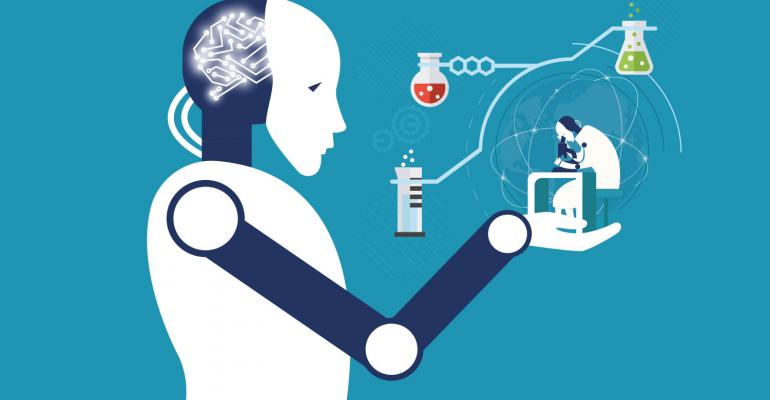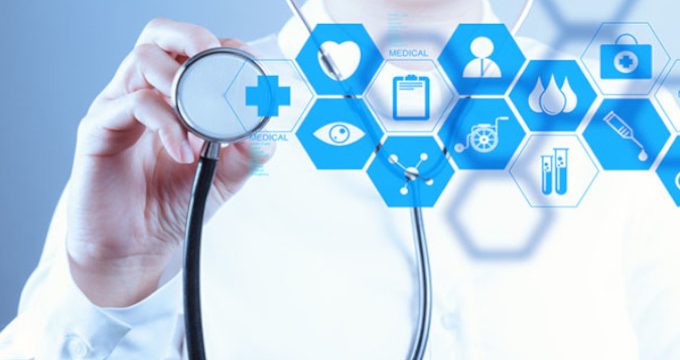The healthcare industry was one of the first ones to recognize the disruptive potential of the new technologies. Driven by the adoption of wearable smart sensors, NLP and ML-based solutions, the global market for healthcare IoT has reached USD 147.1 billion in 2018 and is expected to expand at 19.9% CAGR until 2025, as reports Grand View Research. By 2019, almost 87% of global healthcare organizations will have adopted IoT services.
The stage for automation and IoT adoption has been building up over the decades. The Earth’s population is growing and it’s ageing as well: by some estimates, the number of people over 60 will constitute 27.4% by 2025. Apart from resolving other long standing issues like regulatory, administrative, security, IT and financial problems, meeting the medical needs of the growing senior population is also one of the challenges that call for adopting innovative approaches and technologies.
Automation And IoT Application In Healthcare
Below, we will explore some of the most vivid examples of the IoT application in healthcare, and look at the beneficial and problematic aspects of adopting IoT and automation in medical services.
As of today, the most widespread IoT use cases in healthcare organizations include:
1. Device monitoring
Knowing when a particular device needs repair or replacement enables medical organizations to provide 24/7 services, avoid disruptions and be on the alert whenever a critical situation arises. An example of this solution is Philips e-alert system for MRI. The system monitors MRI condition and sends alerts via e-mail, text messages, or local alarm to notify service engineers that they need to intervene.
2. Remote healthcare monitoring
One of the most exciting things about IoT monitoring in healthcare, is that it enables physicians to monitor human health conditions through wearable devices and sensors. There is no longer any need to physically visit a hospital to go through medical testing – the devices collect metrics about your physical condition and submit them in real time. By instantly alerting patients and physicians about any critical changes, remote health monitoring enables them to take timely action.
Some of such devices are quite sophisticated; for example, remote monitoring is capable of recognizing signs of emotional distress in senior patients and tell if they are in pain.
3. Medical image analysis
Automated AI-based solutions are now helping radiologists, ultrasound diagnostics and other medical scanning experts. Built using Deep Learning and Natural Language Processing, these products automate data collection, organize medical image annotation processes, find and remove protected health information in texts and images. At VARTEQ, we have expertise in building such solutions helping healthcare organizations take their services to a new and more advanced level.
4. Medication management
Assessing how much medication has been administered and observing if the patients have been taking their prescribed meds on time is one of the most obvious applications on IoT monitoring in healthcare. Other inventive methods leverage ingestible sensors to monitor if the medication has been absorbed and where it has been absorbed in the body. Such complex drug management is required to evaluate the effectiveness of medication and estimate its optimal quantities for each individual patient.

5. Therapy adjustment
Remote monitoring techniques are, essentially, paving the way towards personalized healthcare services. By tracking patients conditions in the real time IoT sensors enable physicians to learn if the prescribed therapy or treatment has been successful. If it hasn’t been as effective as expected, the therapist can make an informed, data-driven decision and adjust the treatment methods. Such personalized approach based on accurate individual metrics is by far more effective than the traditional methods which rely on indirect manifestations, guesswork and occasional tests.
6. End-to-end clinic infrastructure management
When it comes to all-encompassing, end-to-end clinical infrastructure methods, IoT has a huge potential to increase the effectiveness of medical organization management by at least 50%. Tracking equipment, personnel and patients helps reduce wait times, predict procurement needs, manage shifts or doctors and nurses and know exactly where and what is happening in real-time.
Benefits Of IoT And Automation Use In Healthcare
In the healthcare sector, IoT and Automation are the true game changers. Apart from enabling healthcare organizations to save costs and provide better management, emerging technologies are helping take treatment efficiency to previously unthinkable levels. IoT connectivity now eliminates physical barriers between doctors and patients, enables them to act instantly and on time preventing many diseases rather than treating them. Treatment methods, on the other hand, are becoming more personalized, tailored to individual peculiarities of each patient. This is bound to bring us to a healthier future, with better quality of life and longer life-spans.
In healthcare IoT and automation are quickly becoming mainstream. By now, a lot of medical organizations have already adopted centralized Electronic Healthcare Records (EHR) systems granting access to all patient-related info for doctors and nurses, and other innovations are underway.
Challenges On The Way Of Automation And IoT Adoption
The roadblocks on the way to IoT adoption are also quite significant. A lot of IoT projects in healthcare fail or are evaluated as only partially successful by stakeholders. The challenges most healthcare organizations typically face include:
1. Legacy infrastructures and systems
Most of the established medical organizations are using outdated IT infrastructure which is in dire need of updating or even replacement. However, doing so will require time, investment and effort. Given the global scarcity of IT talent, the task becomes quite challenging.
For example, most currently used EHR systems weren’t meant to incorporate info from remote sensors. The adoption of unified Electronic Healthcare Records system is also hindered by legal, administrative and regulatory factors, so many organizations still store patients data in disparate EHR databases.
2. Data security
By 2020, experts say, as much as 2020 electronic devices will be used in healthcare IoT. This spells increased security risks – each of these devices is a potential security loophole and a gateway for a malicious attack. Medical databases storing terabytes of sensitive data are also potential targets for hacker attacks. Leveraging IoT and automation at its full potential should, ultimately, go hand-in-hand with the evolution of security systems in order to reduce security risks.
3. Unforeseen problems and obstacles
IoT as a technology is still in its infancy and it’s quite easy to overlook somewhat less obvious obstacles on the way to its adoption. For example, IoT sensors and beacons also need occasional replacement and regular monitoring. Organizations need to include that into their schedules and budget for maintenance and repairs. Employees and patients alike may require training in order to use new technologies effectively. The hospital infrastructure may fail to handle the enormous amounts of data, so the management will have to procure for additional storage and compute capacities, etc.
All in all, healthcare organizations which benefit from adopting IoT and automation tend to start small by identifying one problematics aspect and launching a pilot project. They also partner with experienced pre-vetted third party professionals
Sometimes, even the best out-of-the-box solution won’t work. At VARTEQ we have expertise in building custom-made solutions for healthcare services. If you feel an individual approach will work best in your case, contact us now for an advice or a consultation.
Read also: Exploring IoT in Automotive Industry: Applications and Challenges

